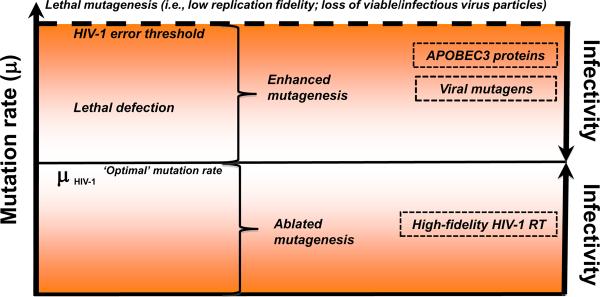Figure 1.

Concept of HIV-1 lethal mutagenesis (extinction catastrophe). The left and right y-axes describe the inverse relationship between mutation rate (μ) and viral infectivity, respectively. Viable virus populations exist below the virus extinction threshold. Small molecules (e.g., nucleotide analogs) and cellular proteins (e.g., APOBEC3G) can act as viral mutagens and increase the viral mutation rate (μ = 3.4 × 10−5 mutations/target base pair/replication cycle [75]), which is identified in the figure as the `optimal' mutation rate. An increase in mutation rate could result in either enhanced mutagenesis (including lethal defection, an intermediary step in the path towards virus extinction) or directly past the error threshold (dashed line) to induce extinction catastrophe, i.e., lethal mutagenesis. As the HIV-1 mutation rate is decreased through ablated mutagenesis (e.g., due to HIV-1 reverse transcriptase [RT] variants with higher fidelity), viral infectivity also diminishes, most likely due to replicative fitness costs.
Dapp et al
